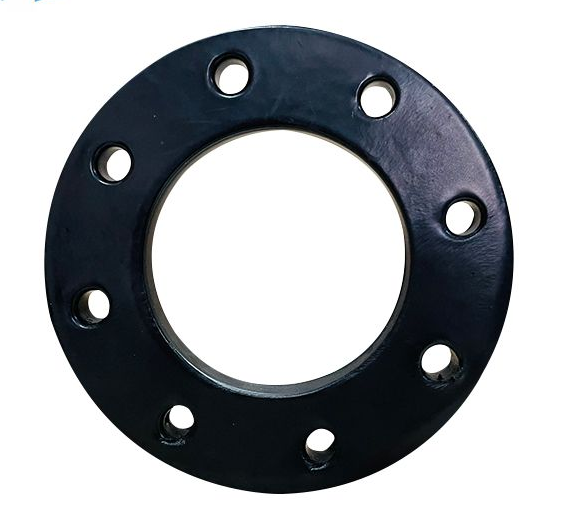-
Cangzhou Yulong Steel Co., Ltd.
-
Phone:
+86 13303177267 -
Email:
admin@ylsteelfittings.com
- English
- Arabic
- Italian
- Spanish
- Portuguese
- German
- kazakh
- Persian
- Greek
- French
- Russian
- Polish
- Thai
- Indonesian
- Vietnamese
- Zulu
- Korean
- Uzbek
- Hindi
- Serbian
- Malay
- Ukrainian
- Gujarati
- Haitian Creole
- hausa
- hawaiian
- Hebrew
- Miao
- Hungarian
- Icelandic
- igbo
- irish
- Japanese
- Javanese
- Kannada
- Khmer
- Rwandese
- Afrikaans
- Albanian
- Amharic
- Armenian
- Azerbaijani
- Basque
- Belarusian
- Bengali
- Bosnian
- Bulgarian
- Catalan
- Cebuano
- China
- China (Taiwan)
- Corsican
- Croatian
- Czech
- Danish
- Esperanto
- Estonian
- Finnish
- Frisian
- Galician
- Georgian
- Kurdish
- Kyrgyz
- Lao
- Latin
- Latvian
- Lithuanian
- Luxembourgish
- Macedonian
- Malgashi
- Malayalam
- Maltese
- Maori
- Marathi
- Mongolian
- Myanmar
- Nepali
- Norwegian
- Norwegian
- Occitan
- Pashto
- Dutch
- Punjabi
- Romanian
- Samoan
- Scottish Gaelic
- Sesotho
- Shona
- Sindhi
- Sinhala
- Slovak
- Slovenian
- Somali
- Sundanese
- Swahili
- Swedish
- Tagalog
- Tajik
- Tamil
- Tatar
- Telugu
- Turkish
- Turkmen
- Urdu
- Uighur
- Welsh
- Bantu
- Yiddish
- Yoruba

Dec . 06, 2024 18:29 Back to list
buttwelded
Understanding Buttwelded Connections in Industry
Buttwelding is a robust and reliable method for joining two pieces of metal or thermoplastics to create a strong, continuous fusion. This welding technique is widely used in various industries, including construction, manufacturing, and various sectors of engineering. As the demand for more durable and reliable connections in pipelines, structural components, and machinery increases, a thorough understanding of buttwelding becomes essential.
The Process of Buttwelding
Buttwelding involves aligning two pieces of material precisely, where their edges are brought into contact. The technique can be executed using several forms of energy such as electrical, laser, or even gas, depending on the material's properties and the intended application. The most common types include arc welding, where an electrical arc melts the edges of the materials for fusion, and resistance welding, where heat generated from resistance to electric current creates a joint.
During the buttwelding process, the operators must ensure that the surfaces to be joined are clean and free from contaminants. Any impurities can weaken the weld integrity and lead to failures under stress. This preparation, also known as joint preparation, often involves grinding or scraping the edges and sometimes using solvents or mechanical means to clean the surfaces.
Advantages of Buttwelding
One of the primary advantages of buttwelded connections is their strength. Once properly executed, a buttweld can be as strong, if not stronger, than the original material. This characteristic makes it ideal for applications involving high pressure or stress – such as in pipelines for oil and gas, water supply systems, and structural components in buildings.
Additionally, buttwelding creates smooth, flush joints that can eliminate potential points of corrosion
. This is particularly significant in systems where moisture and pollutants can lead to deterioration over time. By providing a high-quality, seamless connection, buttwelded joints extend the lifespan of various applications.buttwelded

Applications of Buttwelding
The versatility of buttwelding has allowed it to find applications across numerous fields. In the oil and gas industry, for instance, buttwelded pipes are crucial for maintaining the integrity of pipelines that transport fluids under high pressure. Similarly, in the construction sector, buttwelded joints are used in structural steel components to provide stability to buildings and bridges.
In the manufacturing sector, buttwelding is extensively used for creating tanks and pressure vessels. The automotive industry also benefits from this technique, particularly in creating exhaust systems and frames that require substantial durability without added weight.
Quality Control and Inspection
Quality control is pivotal in ensuring the success of buttwelded connections. Various inspection techniques are employed, such as visual inspections, ultrasonic testing, and X-ray radiography to detect any defects such as cracks or incomplete fusion. Maintaining stringent quality control protocols not only enhances safety but also minimizes the risk of costly failures in operational settings.
Conclusion
Buttwelding represents a critical technique in modern engineering and manufacturing, known for its efficiency, strength, and versatility. As industries continue to evolve and demand more durable and reliable connections, understanding the intricacies of buttwelding will only grow in importance. Proper execution and rigorous quality control measures ensure that buttwelded connections can withstand the test of time, making them a preferred choice in a myriad of applications worldwide. Perfecting this technique is essential for professionals in the field, as it can significantly impact the functionality and safety of structures and systems that are integral to modern industry.
Latest news
-
ANSI 150P SS304 SO FLANGE
NewsFeb.14,2025
-
ASTM A333GR6 STEEL PIPE
NewsJan.20,2025
-
ANSI B16.5 WELDING NECK FLANGE
NewsJan.15,2026
-
ANSI B16.5 SLIP-ON FLANGE
NewsApr.19,2024
-
SABS 1123 FLANGE
NewsJan.15,2025
-
DIN86044 PLATE FLANGE
NewsApr.19,2024
-
DIN2527 BLIND FLANGE
NewsApr.12,2024
-
JIS B2311 Butt-Welding Fittings LR/SR 45°/90° /180°Seamless/Weld
NewsApr.23,2024











